

All of the 15000 known species of ants are social insects that live according to a caste system where each colony contains queen, male and worker ants.
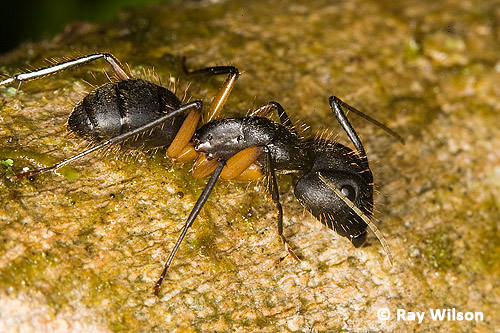
The majority of ants are workers who are all sexually-immature females derived from the eggs of the queen. In most species the queen produces chemicals that inhibit the maturation of the workers and any eggs laid by workers are either infertile or are destroyed by other workers or the queen herself.
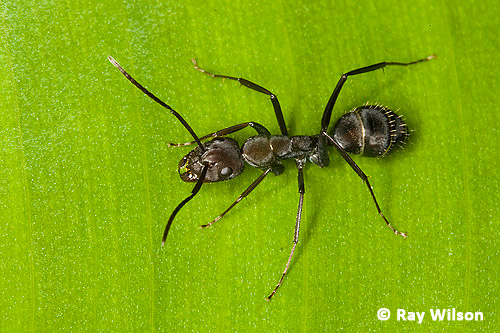
The organisation of the nest and the "cultural" behaviour of the individual species varies enormously. Some are pure hunters that prey on any animal they encounter of a suitable size. Many species, through coordinated attacks, are able to kill prey many times larger than the individual ants. This strategy is exemplified by the infamous Army Ants of South America, who, by shear weight of numbers, are able to capture and kill small vertebrates, such as lizards, if they are not able to run away fast enough.
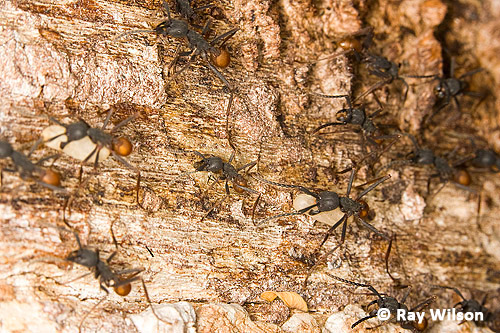
Army ants are nomadic in nature, creating temporary bivouacs from the living bodies of their workers, with the larvae and the queen kept safely inside the protective mass of bodies. Their nomadic nature is borne from necessity as a single colony captures and kills up to 90,000 insects per day! Whenever their prey becomes depleted in one area, they move on to find richer hunting grounds elsewhere.
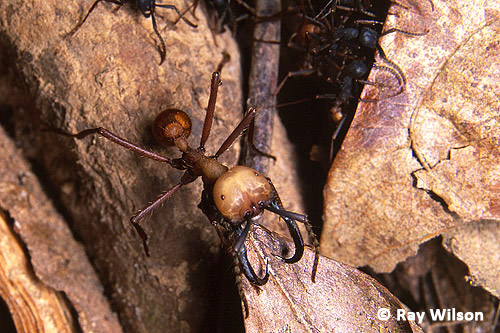
The worker army ants take on many different morphologies depending on their role in the society. The enormous soldiers have such enormously enlarged jaws they are no longer able to feed themselves and rely completely on the smaller workers to feed them.
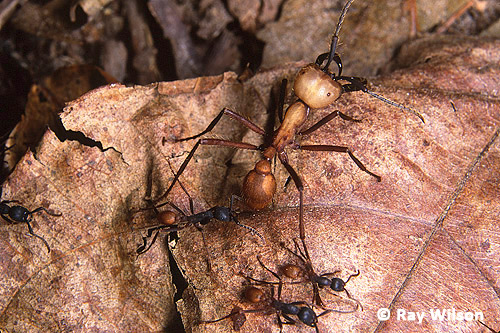
The most advanced ants are the leaf-cutters. These build enormous nests covering 10's of square metres of surface area and extending several metres below ground, and often containing more than 20 million individuals. These ants are entirely vegetarian, deriving their sustenance purely from a fungus that is carefully cultivated inside their nest. To grow enough fungus to sustain such a large colony, the workers have to collect enormous quantities of leaves which they industriously bring back to the nest, often carrying them several hundred metres. Once in the nest the leaf fragments are broken down into smaller fragments by a different worker caste, then an even smaller caste chews the leaf fragments into a pulp for the fungus to grow on. Throughout its growth, the fungus is carefully tended to ensure only the desired species flourishes and any contaminants are quickly disposed of by the ever vigilant workers.
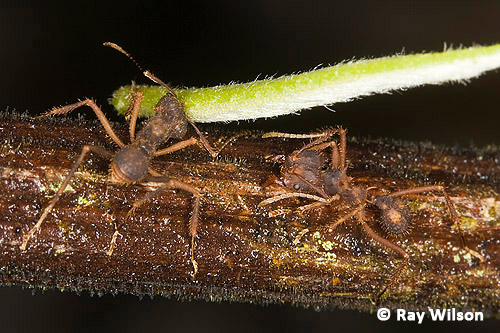
Ants are reknowned for their incredible strength and are capable of carrying objects several times their own body weight, as is demonstrated by this tiny species of leaf cutter ant above.
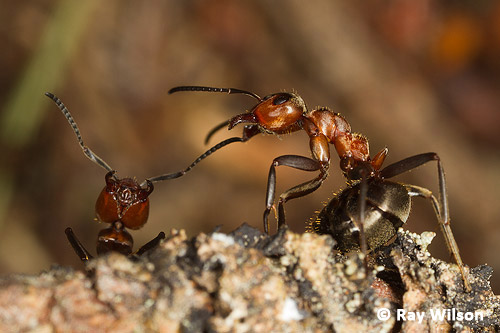
Between these two extreme examples of ant lifestyles, lies a multitude of others. Most European species are generalist hunter gatherers that collect a wide range of animal and plant material for consumption back at the nest. Others are slave-makers. These raid the nests of other ant species and steal their larva which are then raised as workers in the slave-maker's nest. Slave-maker species often don't have a worker caste of their own and rely entirely on their slaves to do all the nest maintenance and larval rearing.
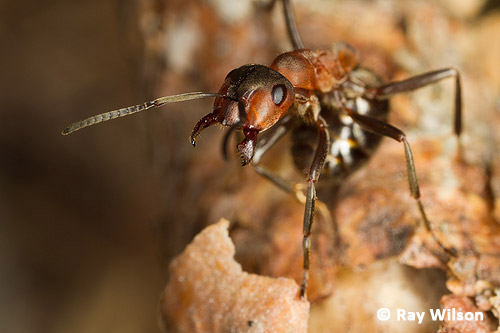
The nests of many of the wood ants of the genus Formica are conspicuous thatched mounds that are a characteristic feature of many northern conifer forests. In some places the nests of several colonies are interconnected via busy highways to form massive supercolonies that may cover areas of several hundreds of square metres or even several square kilometres.
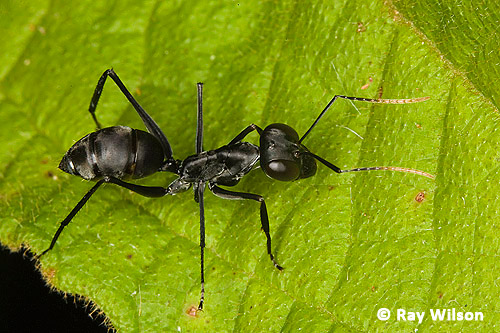
The enormous eyes of Gigantiops destructor render this 1cm long species unmistakable and led W. M. Mann to describe it as "one of the most attractive ants" in his 1916 paper on "The Ants of Brazil". Apart from its large eyes, Gigantiops destructor also has the distinction of being one of the few ants that are capable of leaping in a forward direction, or, to give it its technical term, prosalient movement.
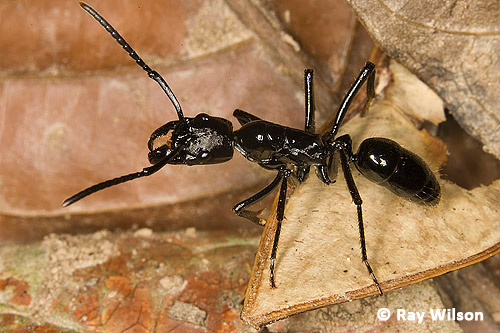
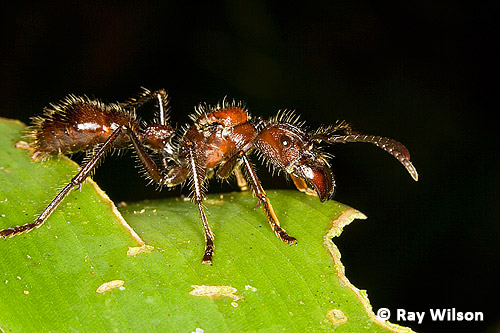
The Giant Bullet Ant of South America generally forms colonies of less than 1000 individuals. The queen of these enormous ants is only slightly bigger than the workers and doesn't exhibit the extreme adaptations to egg production that is typical of most ants.
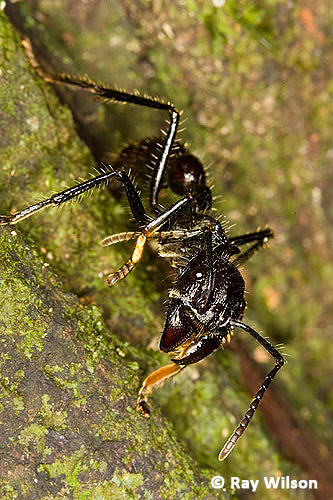 |
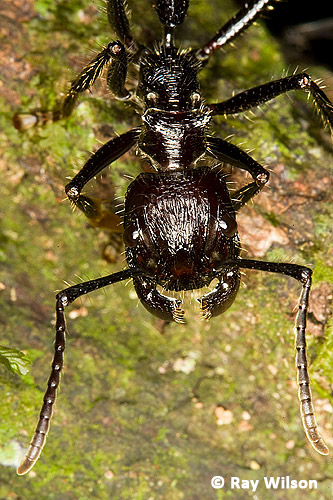 |
Giant Bullet Ants are solitary nocturnal foragers, but what they lack in weight of numbers they make up for in the potency of their sting which is said to be the most painful of any insect. Thankfully, Bullet Ants are not particularly aggressive, but if you are unlucky enough to be stung, the symptoms are reported to be intense pain at the site of the wound for about 3-5 hours, gradually lessening over the next day. The pain is often accompanied by nausea, sweating, and paralysis of the affected area.
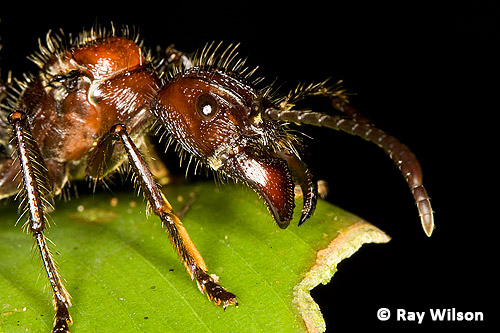
The Red Bull Ant (Myrmecia gulosa) of southeastern Australia is another very large species. Unusually for an ant, its ability to detect air-borne chemicals is poor but makes up for it by having particularly acute eyesight.
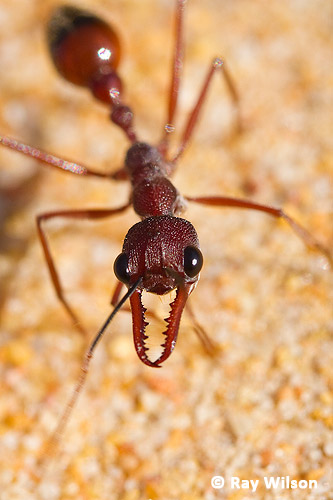
Most British species are of far more modest proportions. One of the commonest species, Myrmica rubra, could probably fit inside of the head of the gigantic ant above.
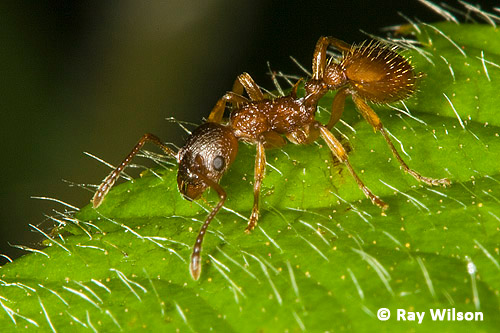
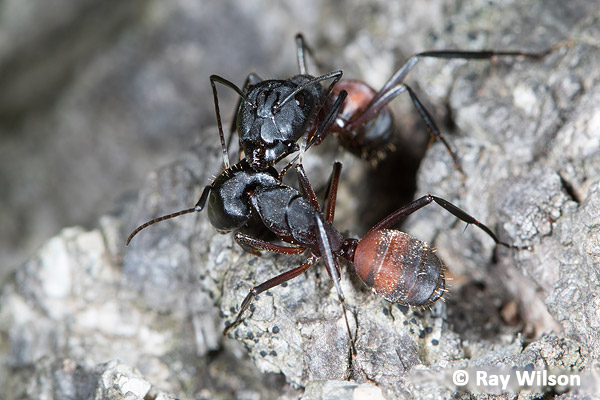
At around 12mm in length, Camponotus cruentatus is one of the largest ants in Europe and was fairly common in the Cork Oak woodlands. Unlike most of the other large European wood ant species, C. cruentatus build their nests underground, often under a rock that is exposed to the sun, the radiated heat increasing the rate of development of their young.
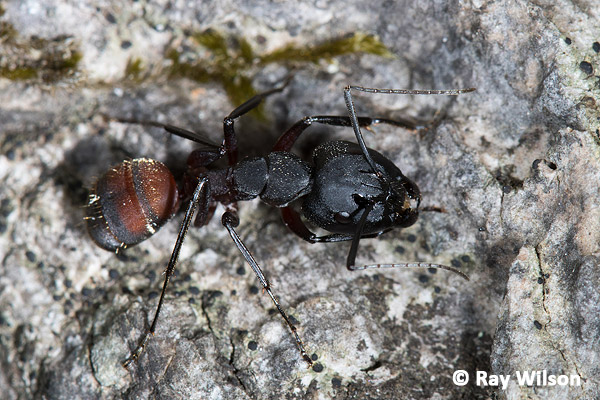
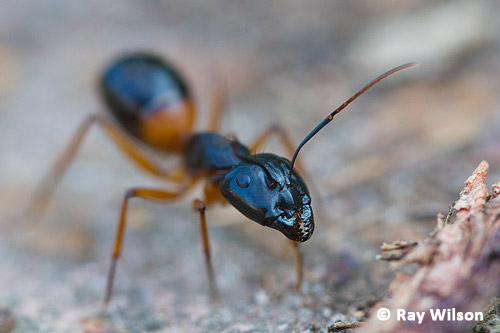
Ray Wilson owns the copyright of all images on this site.
They may not be used or copied in any form without prior written permission.
raywilsonphotography@googlemail.com